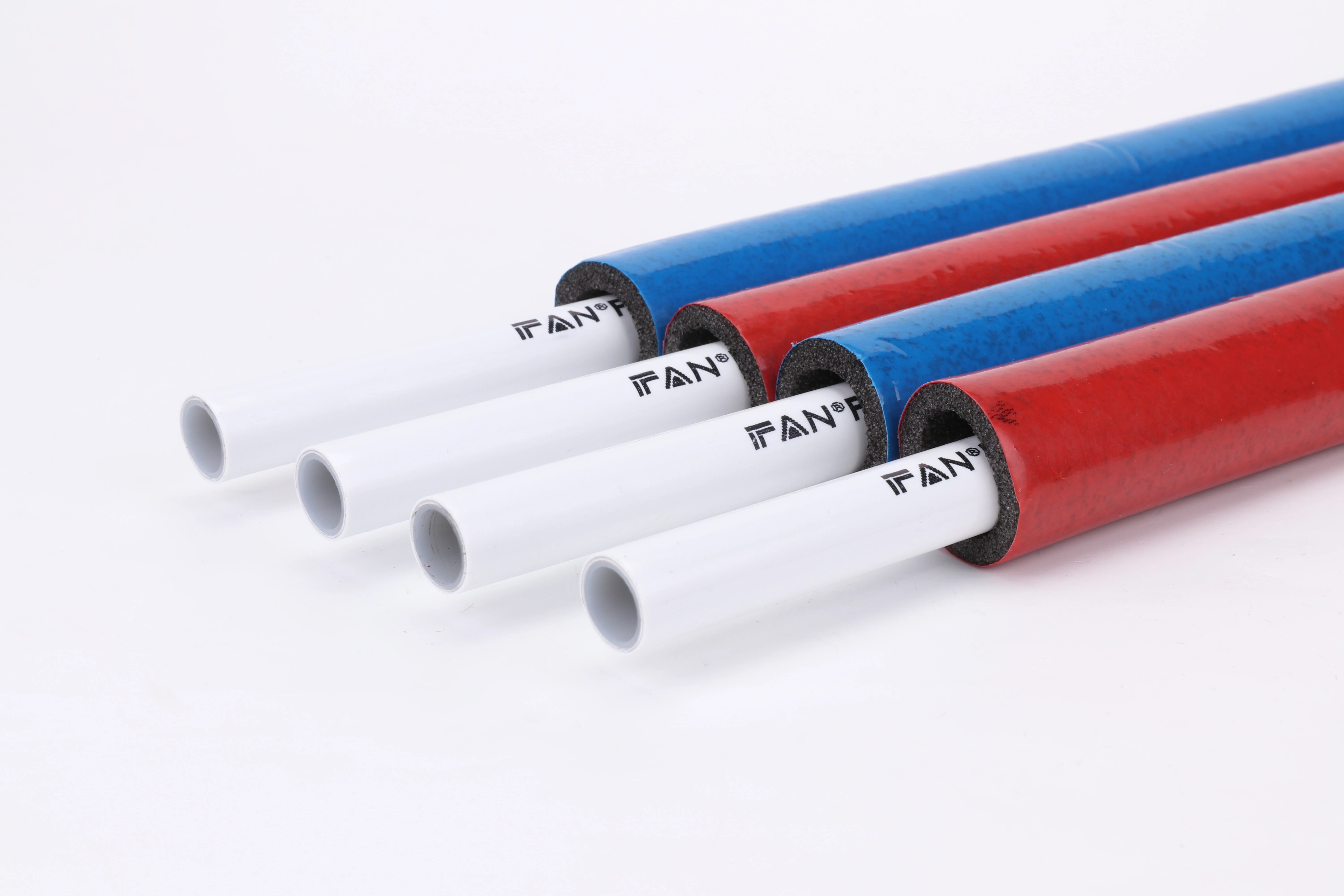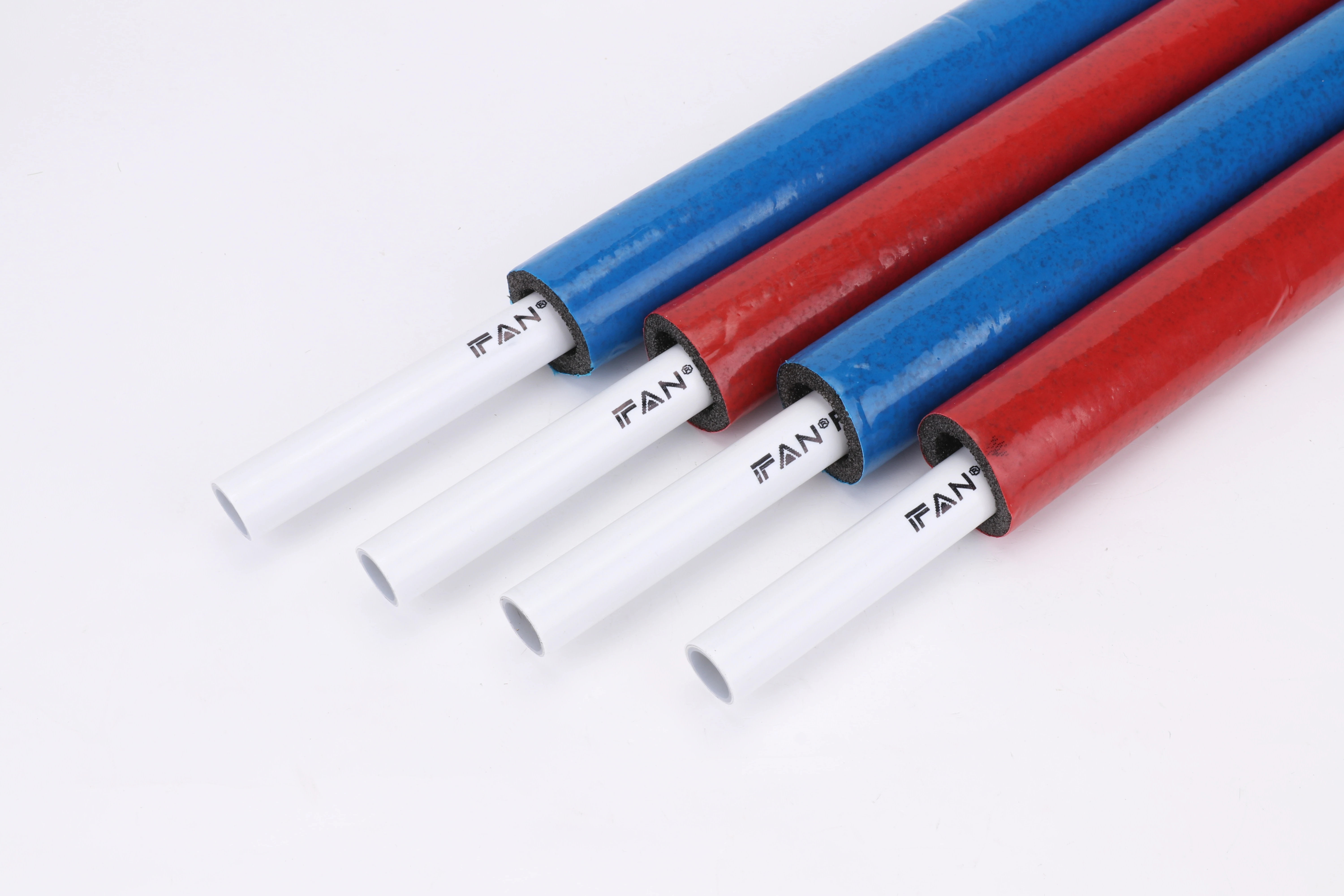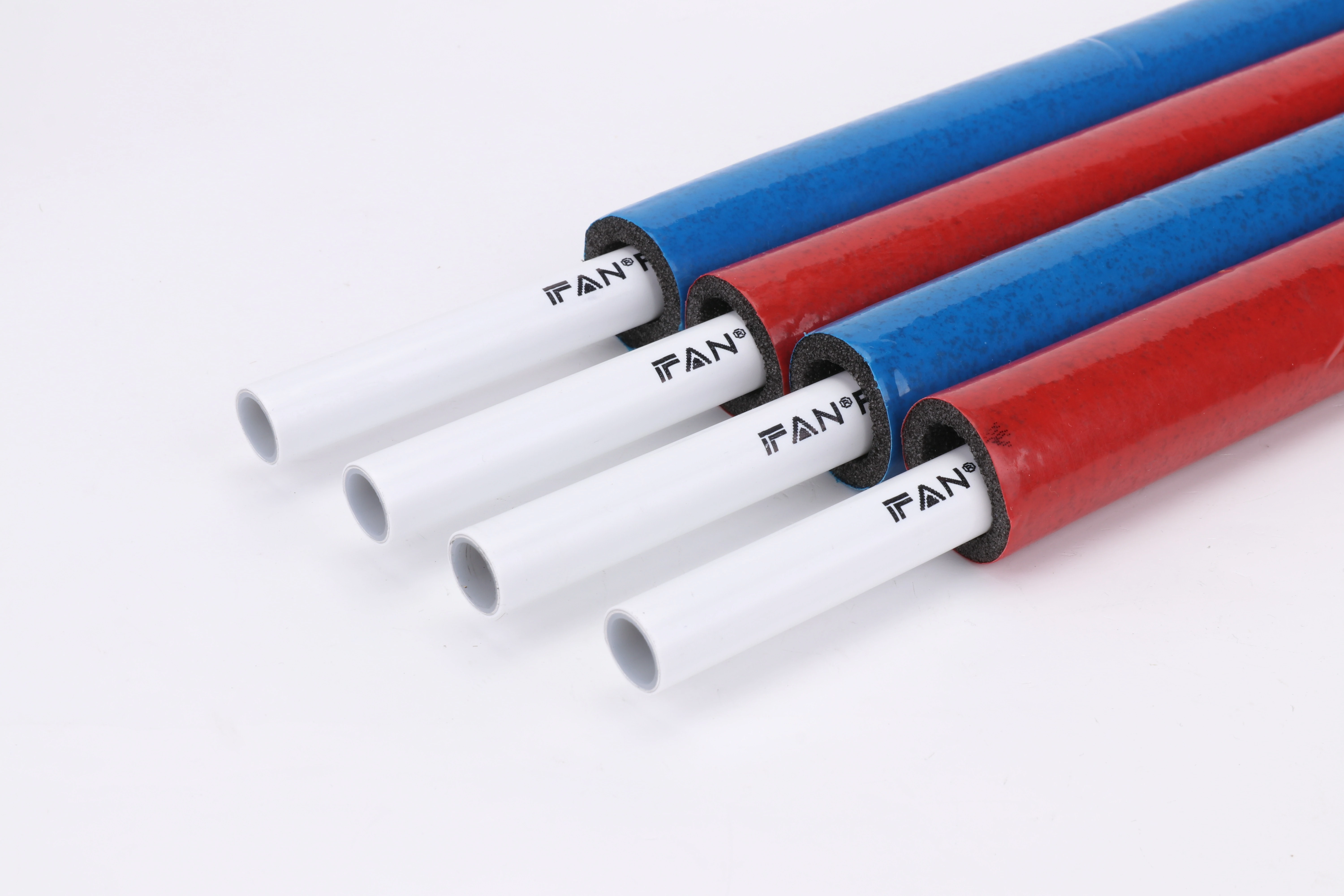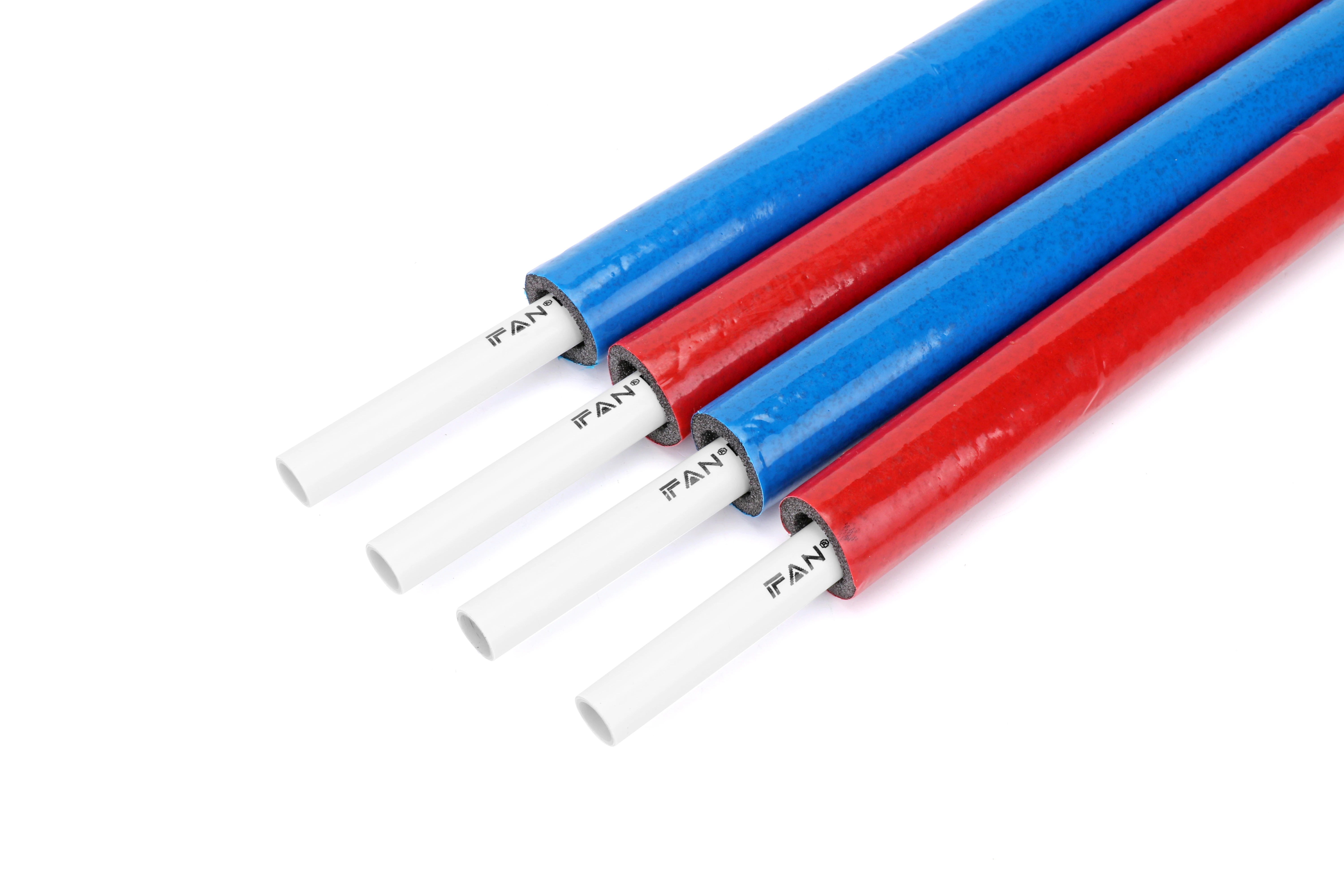During a multi-story residential project, we witnessed how PEX systems effortlessly handled the dynamic pressure demands of simultaneous faucet use across multiple units. This real-world validation demonstrated PEX’s capability to manage the variable pressure conditions typical in household plumbing systems.
Yes, PEX pipes and fittings reliably withstand typical faucet connection pressure, with standard PEX tubing rated for 160 PSI at 73°F and maintaining 100 PSI at 180°F. These ratings significantly exceed normal residential water pressure, which typically ranges between 40-80 PSI, providing substantial safety margin for faucet applications and occasional pressure surges.
Understanding PEX pressure capabilities ensures proper system design and prevents performance issues. Additionally, selecting appropriate connection methods enhances system reliability. Now, let’s examine the specific factors that determine PEX performance in faucet connection applications.
What Is the Maximum Pressure Rating for Standard PEX Pipe Connections?

While evaluating PEX for a high-rise building, we pressure-tested multiple PEX types beyond their rated capacities. The results consistently showed that quality PEX products significantly exceeded their published pressure ratings, providing valuable performance data for critical applications.
Standard PEX pipes carry maximum pressure ratings of 160 PSI at 73°F for all types (PEX-A, PEX-B, PEX-C), with reduced capacity at higher temperatures: 125 PSI at 100°F, 100 PSI at 140°F, and 80 PSI at 180°F. These ratings apply to the pipe itself, while connection methods may have different pressure limitations based on their design and installation quality.
Temperature-Pressure Relationship
The relationship between temperature and pressure capacity follows predictable patterns. Firstly, at standard residential water temperatures (40-60°F), PEX maintains its full 160 PSI rating, which substantially exceeds typical municipal water pressure ranges of 40-80 PSI. This generous safety margin ensures reliable performance under normal conditions.
However, as temperature increases, the pressure capacity decreases gradually. For instance, at typical residential hot water temperatures (120-140°F), the pressure rating reduces to 100-125 PSI. Meanwhile, at the maximum continuous operating temperature of 180°F, the rating decreases to 80 PSI, still adequate for most applications.
Furthermore, different PEX types maintain slightly different performance characteristics under pressure. PEX-A typically shows better stress crack resistance, PEX-B offers higher burst pressure ratings, and PEX-C provides consistent performance across temperature ranges, though all share similar pressure ratings.
Connection Method Variations
Different connection systems affect overall pressure capacity:
| Tipo de conexión | Presión nominal | Temperature Limit | Key Advantage |
|---|---|---|---|
| Expansion | 160 PSI | 200°F | Strongest mechanical bond |
| Crimp | 160 PSI | 180°F | Proven reliability |
| Clamp | 160 PSI | 180°F | Visual verification |
| Push-to-Connect | 100-125 PSI | 180°F | Installation speed |
How Do PEX Connections Handle Sudden Pressure Surges from Faucet Use?
We monitored pressure dynamics in a commercial kitchen where rapid faucet operation created significant pressure fluctuations. The PEX system demonstrated exceptional surge absorption, outperforming copper systems in the same building that experienced more frequent fitting failures under identical conditions.
PEX connections effectively handle pressure surges through their inherent flexibility, which allows slight expansion during pressure spikes, thereby reducing peak pressure at connections. This elastic characteristic, combined with proper installation techniques, enables PEX systems to absorb water hammer energy that would otherwise stress rigid connection points in metal piping systems.
Surge Absorption Mechanisms
PEX systems manage pressure surges through multiple mechanisms. Primarily, the material’s natural elasticity allows temporary diameter expansion during pressure spikes. This expansion absorbs energy and reduces the peak pressure transmitted to fittings, effectively cushioning the system against sudden faucet closures.
Additionally, the mechanical nature of PEX connections provides surge tolerance. Unlike soldered joints that rely on rigid metallurgical bonds, PEX connections incorporate flexible components that can accommodate minor movement without compromising seal integrity. This flexibility proves particularly valuable in mitigating water hammer effects.
Moreover, proper system design enhances surge handling. When combined with air chambers or mechanical water hammer arrestors, PEX systems can handle virtually any residential pressure surge scenario. The combination of material properties and system design creates robust surge protection.
Real-World Performance Data
Actual performance measurements reveal impressive surge handling capabilities:
Pressure Spike Reduction
Testing shows PEX systems reduce water hammer pressure spikes by 30-50% compared to rigid pipes. For example, a 100 PSI surge in copper pipes might register as only 50-70 PSI in equivalent PEX systems, significantly reducing stress on connections and fixtures.
Cycle Testing Results
Accelerated testing demonstrates PEX systems withstand 100,000+ pressure cycles between 50-150 PSI, far exceeding the 10,000-cycle requirement for residential plumbing systems. This durability ensures long-term reliability despite daily faucet operation cycles.
Which Connection Method Provides the Strongest Seal for Faucet Installations?
After testing multiple connection types in our laboratory, we discovered significant differences in long-term performance under faucet connection conditions. The expansion system demonstrated clear advantages for critical applications where maximum reliability is essential.
Expansion connections provide the strongest seal for faucet installations, creating a mechanical bond that exceeds the pipe’s own strength. The cold expansion process allows PEX-A pipe to shrink back around the fitting, creating continuous 360-degree compression that maintains seal integrity even during pressure surges and temperature fluctuations typical of faucet use.
Connection Strength Comparison
Different connection methods offer varying performance characteristics:
Expansion Connection Advantages
The expansion method creates what many professionals consider the superior connection for several reasons. Firstly, it forms a mechanical bond stronger than the pipe itself, with failure typically occurring in the pipe wall rather than at the connection. Secondly, it provides the best resistance to pull-out forces, a valuable characteristic during installation and maintenance. Thirdly, it maintains seal integrity during thermal cycling, crucial for hot water faucet connections.
Crimp Connection Reliability
Properly installed crimp connections offer excellent performance for standard applications. They provide reliable service at rated pressures when installed with calibrated tools. Additionally, they allow visual inspection of the crimp ring position and compression. However, they may be more vulnerable to improper installation than expansion connections.
Push-to-Connect Convenience
Push fittings offer installation speed with good reliability for accessible locations. They enable quick faucet installation and removal for maintenance. That said, they typically have lower pressure ratings than other methods. Their performance depends heavily on proper pipe preparation and insertion.
Performance Testing Results
Comparative testing reveals distinct performance differences:
| Performance Metric | Expansion | Crimp | Push-to-Connect |
|---|---|---|---|
| Burst Pressure | 400+ PSI | 350-400 PSI | 250-300 PSI |
| Pull-Out Resistance | 300+ lbs | 150-200 lbs | 100-150 lbs |
| Thermal Cycle Rating | 10,000+ cycles | 5,000 cycles | 2,500 cycles |
| Installation Error Tolerance | High | Moderate | Low |
What Testing Standards Verify PEX Durability Under Repeated Pressure Cycles?
When a municipality questioned PEX durability for their housing project, we provided test data showing PEX exceeded all relevant standards. This documentation convinced officials to approve PEX for the entire development, highlighting the importance of understanding certification requirements.
ASTM F876, ASTM F877, and ASTM F2023 standards verify PEX durability through sustained pressure tests, pressure cycling tests, and chlorinated water resistance tests. These standards require PEX systems to withstand 100,000 pressure cycles between 50-150 PSI at various temperatures, plus 1,000 hours at 2.5 times rated pressure without failure.
Comprehensive Testing Protocols
Standardized testing ensures consistent performance:
Pressure Cycling Tests
ASTM standards require rigorous pressure cycling evaluation. Specifically, pipes must endure 100,000 pressure cycles between 50-150 PSI at 73°F, simulating decades of normal use. Additionally, they must survive 10,000 cycles at elevated temperatures (140°F or higher) to verify hot water performance. These tests also include 250,000 rapid cycles (1-2 seconds per cycle) to evaluate fatigue resistance.
Sustained Pressure Evaluation
Long-term pressure testing validates durability over extended periods. Pipes must withstand 1,000 hours at 2.5 times rated pressure without failure. They also undergo testing at elevated temperatures (158°F) under pressure to verify performance under stress. Furthermore, 10,000-hour tests project 50-year lifespan performance.
Burst Pressure Requirements
Minimum burst pressure standards provide safety margins. At 73°F, pipes must withstand 475 PSI (3 times working pressure). At 180°F, the requirement is 215 PSI burst pressure. These standards also mandate consistent performance across production batches.
Certification and Quality Assurance
Third-party certification provides performance verification:
NSF/ANSI 61 Certification
This certification ensures material safety for potable water. It verifies that pipes don’t leach harmful substances into drinking water. Additionally, it confirms consistent material composition across production runs. It also validates manufacturer quality control processes.
IAPMO Listing
IAPMO listing indicates compliance with plumbing codes. It certifies that products meet UPC (Uniform Plumbing Code) requirements. It also provides third-party verification of manufacturer claims. Furthermore, it ensures compatibility with recognized installation methods.
Quality Control Testing
Manufacturers conduct additional verification through batch testing of raw materials for consistency, continuous production line monitoring, regular sampling and destructive testing, and final inspection before shipment.
Conclusión
PEX systems reliably withstand faucet connection pressure through robust material properties, appropriate pressure ratings, and proven connection methods that manage both steady-state and surge conditions. Compliance with recognized testing standards ensures long-term durability under repeated pressure cycles, making PEX suitable for residential and commercial faucet applications when properly selected and installed according to manufacturer guidelines and local codes.













Comentarios recientes